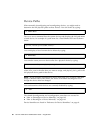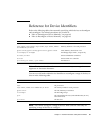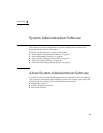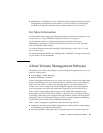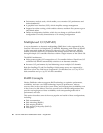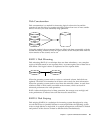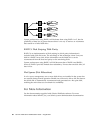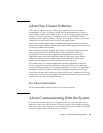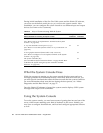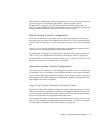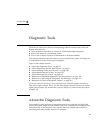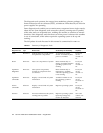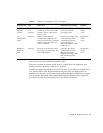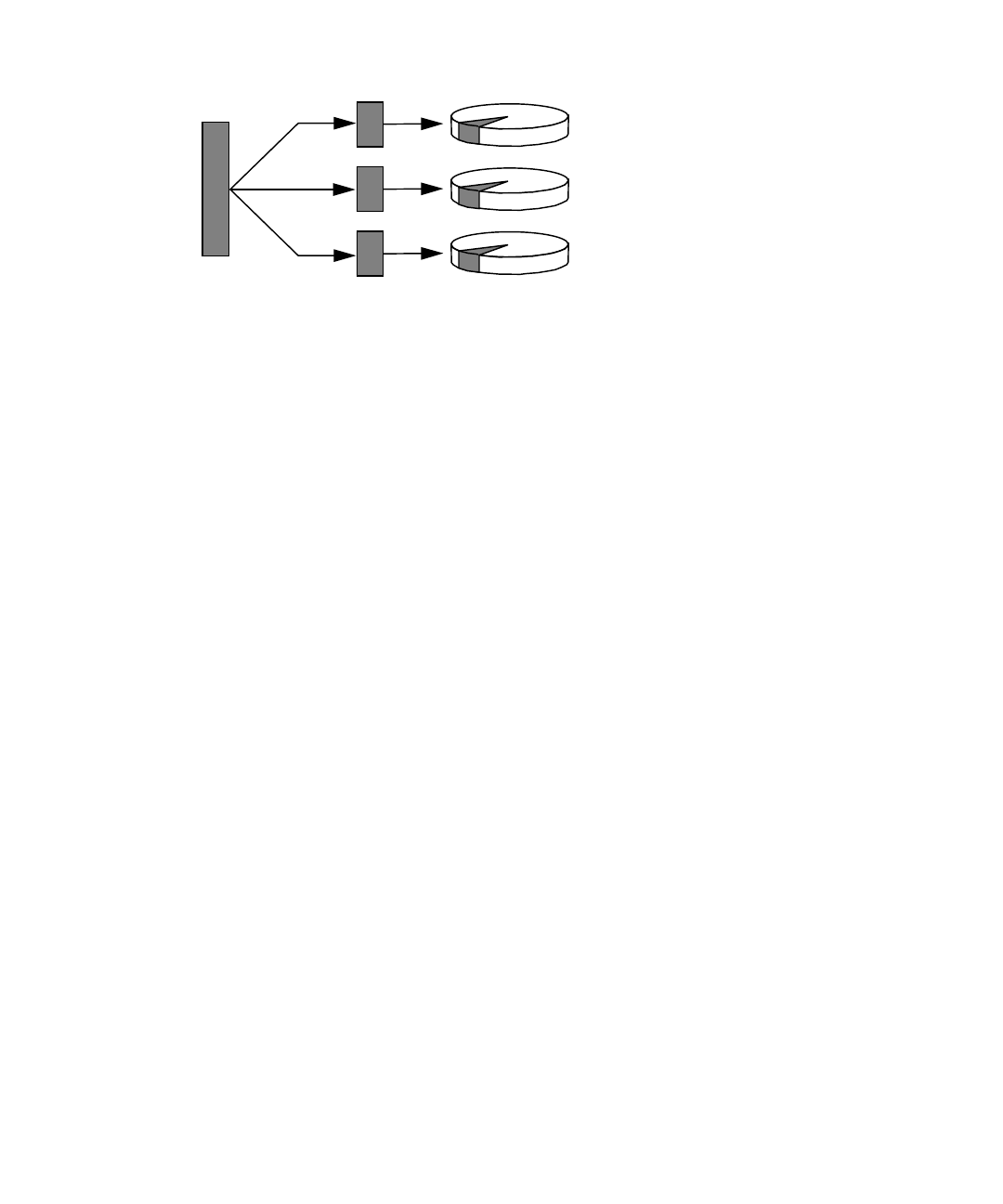
68 Sun Fire V490 Server Administration Guide • August 2004
System performance using RAID 0 will be better than using RAID 1 or 5, but the
possibility of data loss is greater because there is no way to retrieve or reconstruct
data stored on a failed disk drive.
RAID 5: Disk Striping With Parity
RAID 5 is an implementation of disk striping in which parity information is
included with each disk write. The advantage of this technique is that if any one
disk in a RAID 5 array fails, all the information on the failed drive can be
reconstructed from the data and parity on the remaining disks.
System performance using RAID 5 will fall between that of RAID 0 and RAID 1;
however, RAID 5 provides limited data redundancy. If more than one disk fails, all
data is lost.
Hot Spares (Hot Relocation)
In a hot spares arrangement, one or more disk drives are installed in the system but
are unused during normal operation. Should one of the active drives fail, the data on
the failed disk is automatically reconstructed and generated on a hot spare disk,
enabling the entire data set to maintain its availability.
For More Information
See the documentation supplied with Solstice DiskSuite software. For more
information about MPxIO, see your Solaris system administration documentation.



